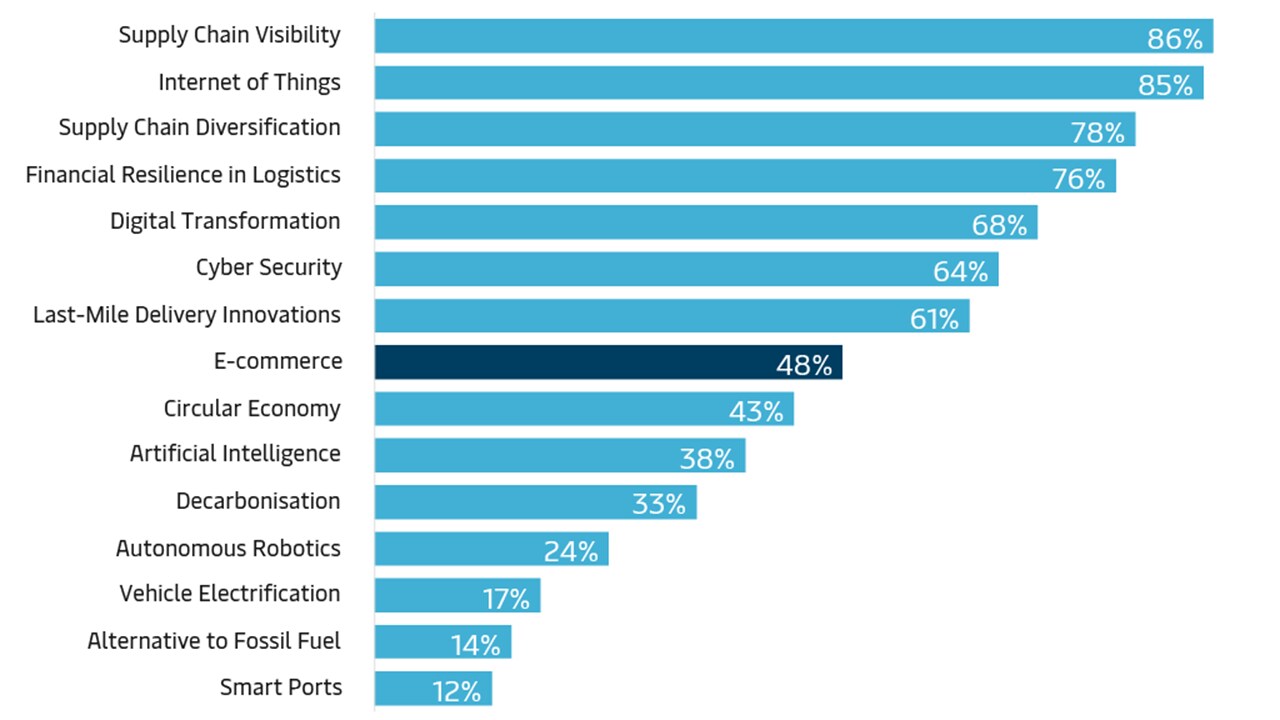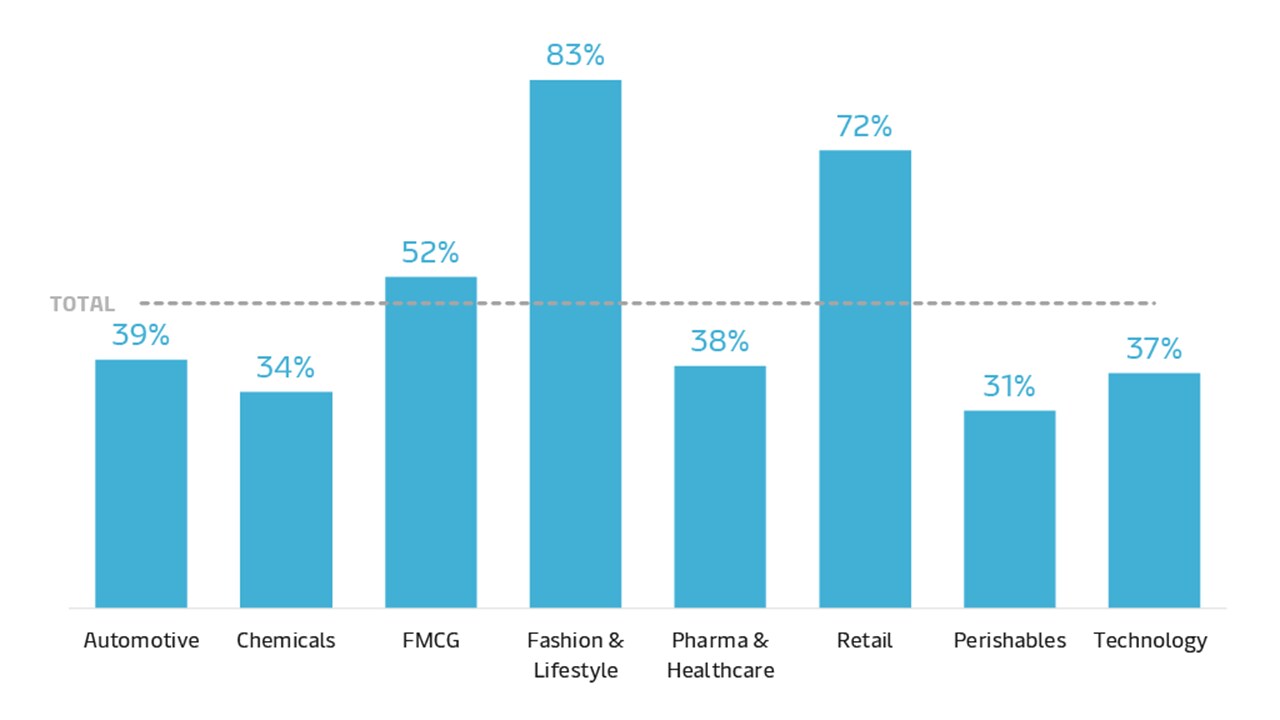
E-Commerce
Adapting logistics to meet rising e-commerce demands through faster delivery services and optimised solutions.
Theme: Growth
Industry Adoption: ⚫ ⚫ ⚫ ⚫ Industry Standard
Impact: ⚫ ⚫ ⚪ Significant
A 2024 Maersk survey shows that decision makers rank E-Commerce 8th out of the top 15 trends.
As e-commerce expands globally, logistics must adapt to overcome urban congestion, rising costs, and increasing customer demand for rapid delivery. Infrastructure challenges in cities and shifting consumer expectations, is driving innovation. With global e-commerce revenue projected to grow from 4.12 trillion USD in 2024 to 6.49 trillion USD by 2029, the trend continues to reshape the logistics landscape.
Market activity highlights e-commerce as a hub of innovation: Over 100 startups have entered the space since 2015, making it one of the most dynamic areas in logistics. Approximately 800 patents were filed between 2019 and 2023, though only a small portion are groundbreaking. They reflect continuous refinement rather than industry disruption. C-Suite mentions have decreased significantly, from 1,330 in 2022 to 400 in 2024, indicating that e-commerce is now fully integrated within the logistics industry. Meanwhile strong academic engagement, with nearly 3,000 publications, highlights its importance as a research field. E-commerce has become the industry standard in the Business-to-Consumer (B2C) sector. Business-to-Business (B2B) e-commerce, while less mature, is catching up.
100+
thereof groundbreaking: 20+
2024: 400+

Explore the Global Logistics Trends of 2025
Dive deep into the Top 10 trends shaping the industry today as well as valuable insights to help you build a more resilient supply chain.
Top 15 Trends
Share of Key Decision Makers, who consider the trend to be relevant for their company’s logistics

E-Commerce – Relevance by Industry

What are the opportunities?
E-commerce enables businesses to enhance customer relationships through faster fulfilment and regional centres, reducing lead times and improving service quality. Leveraging integrated logistics services, such as combining ocean and air freight for example, enhances cross-border efficiency and can boost responsiveness to market demands.
What are the challenges?
High air freight costs and last-mile inefficiencies in urban areas can strain logistics networks, increase costs and augment environmental impact. Rising consumer expectations for rapid deliveries and high return rates, add further pressure on companies to balance speed with sustainability.
Sources:
- Statista (2024).
- Survey among 500+ global logistics decision makers across various industries, conducted by Statista for Maersk (Q4 2024).
- In-depth interviews with global industry experts, academia, and futurists.
- Unstructured web sources with more than 10,000 search term permutations using AI.
- Curated data from startup databases, patent databases, and analysis tools, as well as Semantic Scholar.



